
Did you know that a mere 8% of the world's population with engineering degrees is responsible for nearly 90% of technological advancements we enjoy today? That's a staggering contribution from a small group of innovators.
As our world rapidly evolves, the demand for forward-thinking engineers is skyrocketing. Engineering degrees have never been more crucial in shaping tomorrow's landscape. Their impact is unfolding in surprising, sometimes unexpected ways.
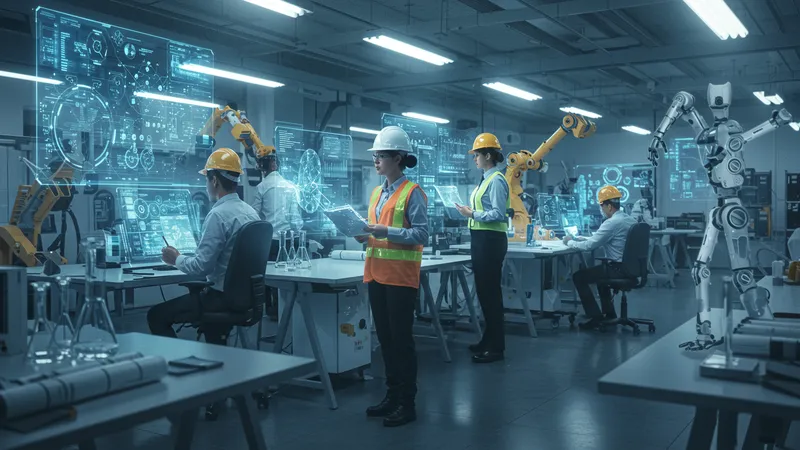
In an age where technology defines the way we live, engineering offers pathways not just to prestigious careers but to pioneering solutions that tackle global problems. Imagine cities powered by sustainable energy, aviation breakthroughs reducing carbon footprints, or biomedical innovations that extend human life. All these revolutions began with an engineering concept. However, engineering's glamorous exterior conceals a reality of rigorous challenges and competitive environments. But that’s not even the wildest part…
Surprisingly, the fields within engineering are not as saturated as one might think. There's a vast array of niches yet to be fully tapped, from nanotechnology to space mining. And these fields are not confined to the tech titans of Silicon Valley; they span industries that few would associate with engineering at first. Roles that blend creativity with technicality are revolutionizing what it means to be an engineer today. But there’s more—remarkable, game-changing trends are emerging. What happens next shocked even the experts…
Engineering is not just about towering skyscrapers or bridges; it’s about innovation in impossible places. Take biomedical engineering, a field growing at an exponential rate. This discipline merges medicine with engineering to create revolutionary treatments, like tissues grown in labs or wearable technology that monitors health in real-time. These innovations are not just enhancing lives; they're saving them.

The fascinating part is how industries thought to be unrelated are merging with engineering. Who would've imagined that fashion technology would be a booming area, marrying style with function through textile engineering? From fabrics that regulate temperature to clothes that charge your phone, the possibilities are as limitless as the creativity applied to them.
Similarly, environmental engineering is stepping into the spotlight, offering solutions to some of the planet’s most pressing issues. From waste management to renewable energy sources, these engineers are effectively the unsung heroes in the war against climate change. But there's a hidden facet: the economy their solutions generate, estimated to reach billions by 2025.
One often overlooked but rapidly expanding field is agricultural engineering. Revolutionary practices are transforming food production, making it more sustainable and efficient. Techniques like precision farming and drone surveillance are optimizing yields and minimizing waste. The full potential of these innovations has yet to be realized. What you read next might change how you see this forever.
The melding of engineering with artificial intelligence is propelling us into a future that once seemed like science fiction. Imagine infrastructures that self-repair or smart systems that ensure public safety by predicting disasters before they happen. AI-driven engineering is not just a trend; it’s a transformation guiding us to a sustainable future.
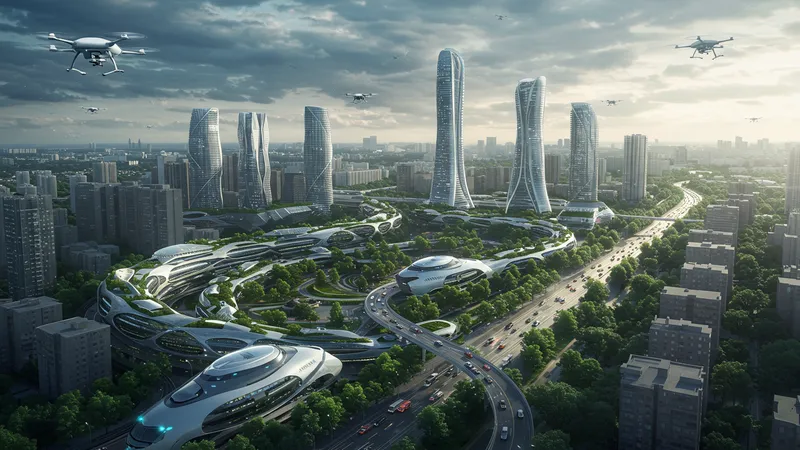
AI’s role in this transformation is multifaceted. In automotive engineering, for instance, self-driving cars are only the beginning. The real marvel lies in autonomous vehicles interacting harmoniously, reducing accidents and traffic congestion. This interaction could innovate urban planning concepts, creating safer, smarter cities.
On another frontier, AI in the realm of manufacturing is enhancing productivity beyond human limits. Machines learn to optimize processes, reducing resource use while maximizing output. This increase in efficiency is reshaping industries, making them leaner and greener, one production line at a time.
The future dares us to dream bigger with AI, pushing boundaries in fields like civil and aerospace engineering. Structures that understand and adapt to their environment or aircrafts that navigate using AI, increasing efficiency and safety. These technological leaps will redefine our reality. But there’s one more twist that will widen even the most skeptical eyes.
One of engineering's lingering challenges is the persistent gender gap that continues to haunt the industry. Despite significant efforts, women still represent only 13% of engineers and this disparity impacts innovation. The true potential of engineering can only be unlocked with diverse perspectives.

The barriers faced by women in engineering are multi-layered, spanning from education to workplace culture. However, successful women in engineering are paving the path for future generations, becoming role models who inspire systemic change. Their stories of resilience and triumph are necessary catalysts for progress.
Numerous initiatives are now aiming to close this gap. Schools and organizations globally are investing in programs that inspire and encourage young girls to pursue STEM fields. But breaking these barriers doesn't end at education. Institutional reforms to eliminate gender bias are equally critical.
The potential outcome is inspiring. By fostering an inclusive environment, engineering can unleash a torrent of untapped creativity and innovation. As opportunities for women in engineering expand, the industry stands to gain immeasurably. What you learn next could spark your own journey in this transformative field.
Coding is the backbone of many engineering breakthroughs. In a digital world, different programming languages can be tools of creativity and destruction, unlocking new possibilities. Languages like Python and C++ play pivotal roles in the engineering processes, from data analysis to the design of complex systems.

The versatility of these languages extends across fields. Engineers use these tools to craft sophisticated models and simulations that predict real-world outcomes, helping to avoid costly mistakes long before they happen. Coding fluency is becoming as crucial as the ability to solve equations.
Embedded systems, microcontrollers operated by software, are shaping modern-day electronics. With C being the language of choice for such systems, engineers are developing everything from mobile phones to spacecraft. These languages are the linchpin of myriad innovations we might otherwise overlook.
Despite their importance, learning to code remains intimidating to many. Fortunately, schools and online platforms are breaking down these barriers, making it easier for aspiring engineers to embrace these essential skills. The monumental influence of coding on engineering’s evolution is unfolding faster than you might imagine. Ready for the next revelation?
Engineering is no longer confined to conventional roles. As industries evolve, non-traditional engineering careers are on the rise, blending technical skills with other disciplines to create unique and rewarding paths. These roles often offer a fresh take on how engineering can solve real-world problems.
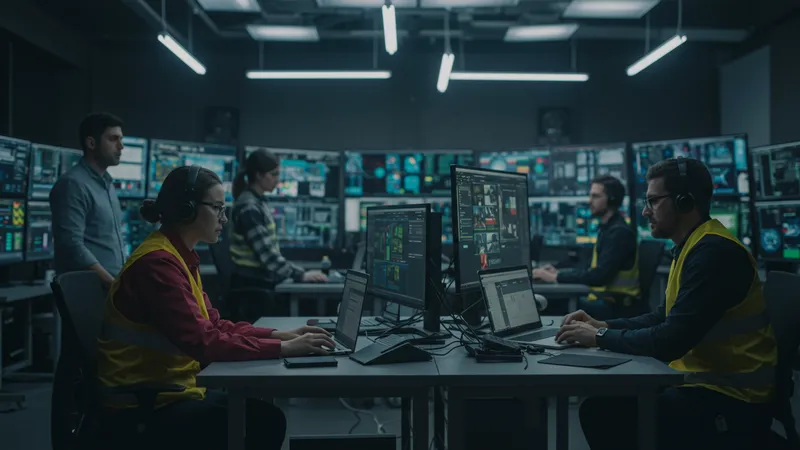
Consider media engineering, for example, where engineers blend technical prowess with creative insights to produce compelling visual content. This field is particularly vibrant as digital storytelling becomes essential across industries, an intersection of art and science that captivates audiences.
Social impact engineering is another burgeoning area, where professionals leverage engineering tools to address societal challenges, from building infrastructure in developing countries to designing sustainable solutions in disaster-stricken areas. These careers are not only fulfilling but also crucial in creating a healthier, more equitable world.
Lastly, engineering roles in policy-making are gaining traction, as governments recognize the value of technical expertise in advocating for science-based solutions in legislation. Engineers here wield the power to influence regulations and shape the future of industry practices. The creativity and impact of these roles are redefining the boundaries of what it means to be an engineer. There’s an unexpected twist coming up next…
Beyond the obvious benefits like a high salary and job security, an engineering degree offers perks you might not consider. Engineers frequently enjoy a high degree of autonomy at work, with the freedom to problem-solve creatively and propose innovative solutions.

This autonomy fosters a culture of innovation and is a powerful motivator. Each day brings new challenges and the opportunity to devise groundbreaking solutions. This environment is ideal for individuals who thrive on pushing boundaries and challenging the status quo.
Travelling is another unexpected benefit, as engineering careers often involve international collaboration. Engineers regularly work on projects overseas, gaining unique cultural experiences and an expanded worldview. This exposure often leads to personal growth and a global perspective that's invaluable both personally and professionally.
Last but not least, the engineering community is a close-knit network, offering rich opportunities for mentorship and collaboration that support professional development. Engaging with these networks can open doors to unparalleled career opportunities and personal fulfillment. But what's coming next is even more exciting...
While we’re familiar with many engineering marvels today, numerous breakthroughs were nearly lost to obscurity. Take, for instance, Tesla’s wireless energy transmission. Although largely unfulfilled in Tesla's lifetime, modern engineers are reviving and advancing this concept potentially to revolutionize energy distribution.

Another forgotten innovation is the concept of vertical farming, which dates back to ancient civilizations. With the acute issues of land scarcity and food security, vertical farming is regaining traction as a sustainable solution that can drastically reshape urban agriculture.
Old patents and designs are continuously mined for ideas that weren't feasible with past technological limitations but hold immense promise today. Modern technology has unlocked new avenues for these dormant ideas to flourish, driven by fresh perspectives and innovative approaches.
Exploring these rediscovered innovations can yield surprising insights, paving the way for future advancements that build on the genius of the past. Sometimes, looking back is the key to leaping forward. But the next frontier is just around the corner…
The remote work era has unlocked previously unimaginable flexibility in engineering jobs. Engineers now have opportunities to work from any location worldwide, broadening not only personal freedom but also access to global job markets.

Companies are recognizing the benefits of tapping into a global pool of talent, which allows them to solve complex problems with expertise sourced from all corners of the Earth. The variety of perspectives and skills available enhances creativity and innovation, leading to superior engineering solutions.
The tools and platforms enabling remote engineering work are evolving rapidly. Sophisticated modeling software, virtual reality collaboration tools, and cloud-based project management systems are integrating seamlessly, making remote work an optimal option rather than a compromise.
Despite the geographical distance, remote engineering teams are thriving, bolstered by collaborative technology that bridges gaps and fosters teamwork. The boundaries of traditional office environments are now blurred, connecting like-minded professionals from everywhere. What you encounter next might redefine your notion of teamwork.
The gig economy is not typically associated with engineering, yet the discipline is increasingly blending into this flexible work model. Freelance engineers provide specialized skills on a project basis, catering to startups and established firms eager for innovative, short-term solutions.
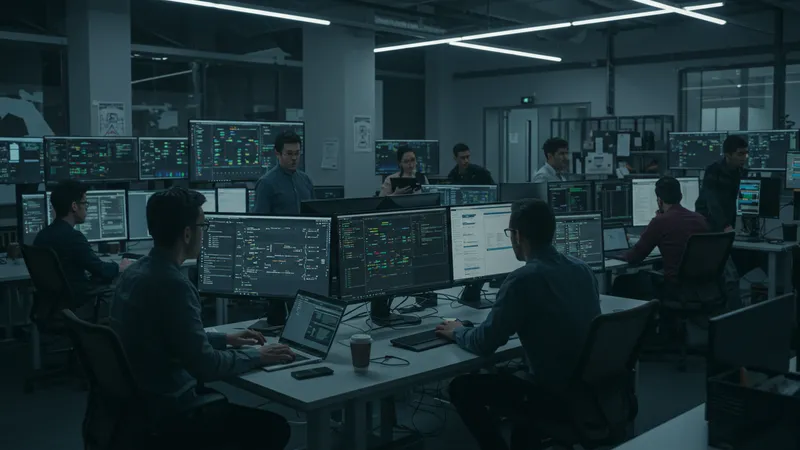
Platforms facilitating these engagements are thriving, offering engineers the chance to diversify their work experiences. Freelancers enjoy the unpredictable variety, pursuing roles ranging from consulting and design to software development—all tailored to their expertise.
This trend is particularly favorable for new graduates who gain exposure to different industries, rapidly acquiring skills and building versatile resumes. It’s a remarkable shift from traditional employment models to more dynamic, entrepreneurial pursuits.
As the gig economy grows, engineering's role within it continues to expand, offering novel opportunities and challenges. The intersection of engineering and flexible work models leads to new approaches in problem-solving, diversifying how engineers contribute to the global economy. Are you ready to explore the next unexpected advantage?
Engineering isn't just about improving life on Earth; it's venturing beyond our planet's confines. Space exploration is richer and more ambitious than ever, spearheaded by engineers pushing cosmic boundaries.

Private companies collaborating with engineers are taking the lead in Earth-independent living solutions, from Mars habitats to space mining missions. These projects require nimble, inventive engineering, solving problems no one has faced before.
Behind these feats are innovations in propulsion systems, life support, and sustainable living technologies like growing food in space. These systems rely on cutting-edge engineering with unyielding focus and creativity to ensure survival in alien environments.
Space engineering continues to inspire new generations, inviting a wave of creativity and ambition that blurs the line between science fiction and reality. The stars are no longer the limit, but just the beginning. Dive deeper, and you might redefine your own vision of possibilities.
Environmental concerns are now at the forefront of engineering projects, as sustainability shifts from a trendy buzzword to an imperative necessity. Engineers are pioneers, architecting solutions that prioritize ecological well-being alongside economic growth.
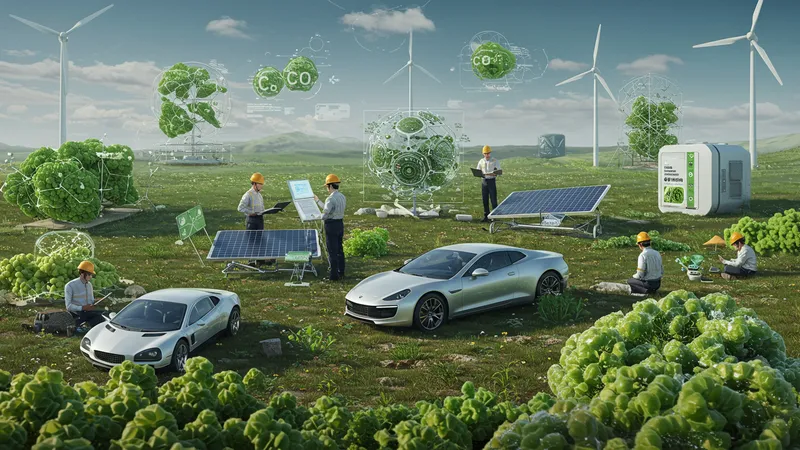
Green engineering is emerging as an indispensable ethos, championing innovations from biodegradable materials to carbon capture technologies. Sustainable energy projects like solar cars and wind turbines demonstrate significant promise for reducing reliance on fossil fuels.
The challenge is substantial. Engineers must relentlessly balance progress with preservation, ensuring developments enhance societal and planetary health. The solutions often emerge from interdisciplinary collaboration, where engineering meets environmental science.
The pursuit of sustainability in engineering is not only crucial but accelerating. The growing pressure for sustainable practices promises to redefine the core metrics of success in engineering projects. Are you prepared for what sustainability has in store? There’s still more to uncover.
Engineering education is undergoing transformation to match the evolving industry standards and societal needs. Universities are integrating modern technologies into curricula and encouraging interdisciplinary studies to cultivate adaptable problem-solvers.
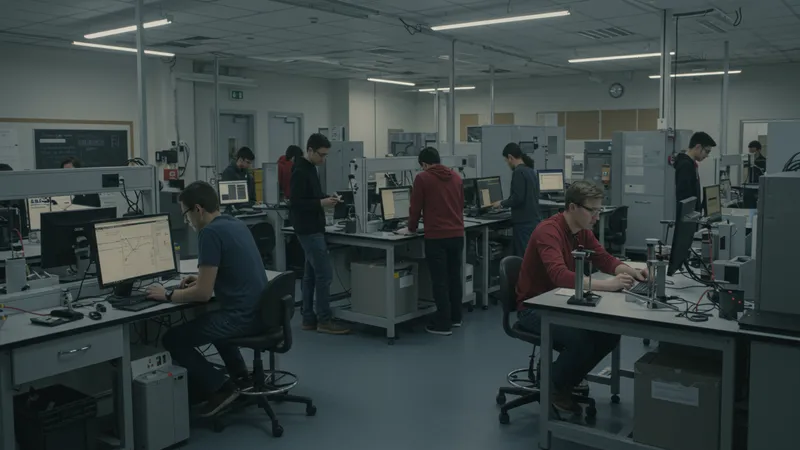
Practical skills are gaining equal footing with theoretical knowledge, as labs and collaborative projects become central to engineering courses. This hands-on approach is more aligned with real-world engineering challenges, preparing students for immediate impact post-graduation.
The rise of online degrees and certifications is offering accessibility to engineering education like never before. Aspiring engineers worldwide can now learn from top-tier institutions without geographical constraints—broadening their career landscapes and opportunities.
This educational shift is reflective of the broader adaptability required in engineering. Academic institutions are primed to evolve their offerings to stay ahead of industry needs and in turn, drive the future of engineering. The next educational frontier awaits exploration.
One often understated aspect of engineering is the ethical responsibility that accompanies innovation. Engineers wield great power, influencing society and the environment through their creations. It is crucial to ensure that advances do not come at unintended costs.

Ethical engineering insists on prioritizing public safety, privacy, and environmental impact. Recent cases of technology misuse have sparked fresh discussions about the moral implications of engineering choices, pressing for accountability in development processes.
Transparency and ethical considerations are increasingly enshrined in engineering practices. Professional codes of conduct help navigate these complex waters, offering frameworks for ethical decision-making throughout the engineering lifecycle.
This evolving focus on ethics in engineering underscores a broader commitment to responsible innovation. As engineers strive to create solutions for modern challenges, they must align their ambitions with mindful stewardship of technological impact. The ethical journey is as crucial as the technical one, and it’s a conversation that must continue to expand. Explore the concluding twist ahead.
Networking is a catalyst in an engineer’s career, providing support, opportunities, and pathways to collaborative ventures. These communities allow engineers to share insights, solve complex challenges together, and push the boundaries of what’s possible.

From associations to online forums, engineers engage in lively exchanges of ideas that fuel innovation. These interactions often lead to groundbreaking projects that might not be feasible in isolation, emphasizing the collective over individual prowess.
Active participation in engineering networks fosters camaraderie and keeps professionals abreast of the latest trends, technologies, and methodologies. This learning aligns with continuous professional growth, setting the stage for career longevity and success.
The influence of these networks extends beyond career factors; they empower engineers to shape industries and influence global innovation trajectories. Your next professional leap could be just one connection away, transforming how you engage with your field. Ready for the dramatic close?
Engineering degrees are more than stepping stones to affluent careers; they are keys to unlocking a future brimming with possibilities. This adventure encompasses adapting to evolving technologies, embracing ethical responsibilities, and exploring beyond earthly confines. It's a world where innovation is limitless and each solution sets the stage for yet greater feats. Share this with aspiring engineers or bookmark it for those seeking to venture into a realm where imagination meets ingenuity. There's never been a more crucial time to be part of the narrative that shapes tomorrow. Join the journey, redefine the future.